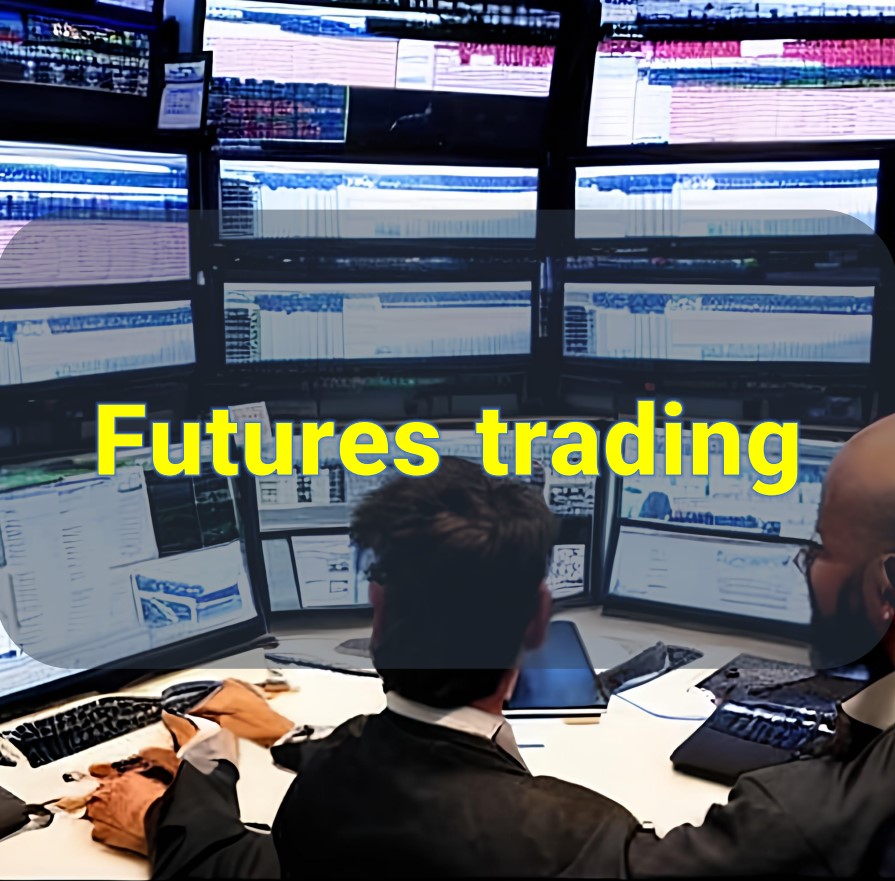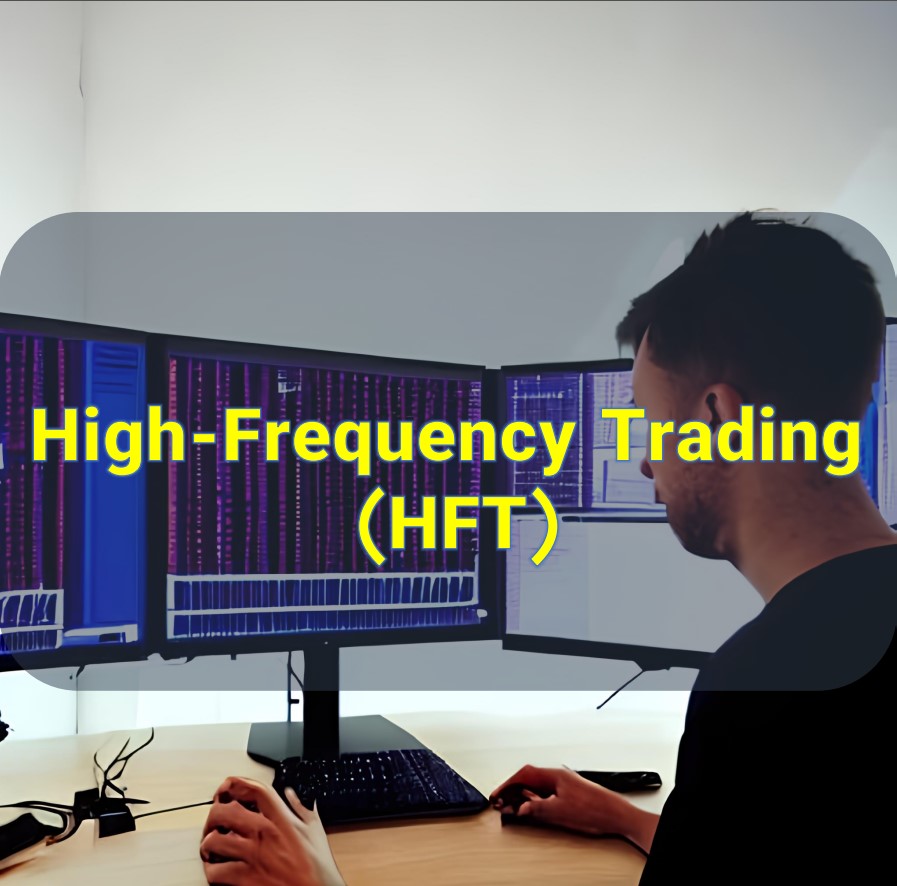Futures trading is a form of investment that involves buying or selling contracts for the future delivery of specific assets at a predetermined price. These assets can include commodities, currencies, stocks, and other financial instruments. Futures contracts are standardized agreements that specify the quantity and quality of the underlying asset, as well as the delivery date and location.
Traders participate in futures markets with the objective of profiting from price movements in the underlying assets. They can take two primary positions: going long (buying) or going short (selling) a futures contract. If a trader expects the price of the asset to rise, they would buy a futures contract, aiming to sell it later at a higher price. On the other hand, if they anticipate the price to fall, they would sell a futures contract, intending to buy it back at a lower price.
There are several advantages to futures trading. It allows investors to speculate on price movements without owning the actual underlying asset, offering potential opportunities for profit. Futures markets also provide liquidity and price discovery, enabling efficient hedging and risk management for businesses involved in the production or consumption of commodities. Additionally, futures trading allows for leverage, meaning traders can control a larger position with a smaller capital investment.
However, futures trading also carries certain risks. The leverage involved can amplify both profits and losses, making it a high-risk investment. Market volatility, unexpected events, and changes in supply and demand can lead to significant price fluctuations, causing losses for traders. It is essential for individuals engaging in futures trading to have a good understanding of the market, employ risk management strategies, and be prepared for potential losses.
It’s worth noting that futures trading is a complex financial activity, and individuals interested in participating should conduct thorough research, consider their risk tolerance, and, if necessary, consult with a financial advisor to make informed investment decisions.
What is the purpose of futures trading?
The purpose of futures trading can vary depending on the perspective of the participants involved. Here are some of the key purposes of futures trading:
1. Speculation: Many participants engage in futures trading with the primary objective of speculating on price movements in the underlying assets. They aim to profit from buying contracts at a lower price and selling them at a higher price or selling contracts at a higher price and buying them back at a lower price. Speculators are attracted to futures trading due to the potential for significant returns, leveraging their capital, and taking advantage of short-term price fluctuations.
2. Hedging: Futures markets provide a platform for businesses and individuals to manage or mitigate their exposure to price risk. Hedging involves taking a position in the futures market opposite to an existing or anticipated physical position in the underlying asset. By doing so, market participants can lock in a price for future transactions, thereby protecting themselves from adverse price movements. For example, a farmer might sell futures contracts to hedge against potential price declines in their crop, ensuring a certain level of income regardless of market fluctuations.
3. Price discovery: Futures markets contribute to price discovery by reflecting market sentiment and expectations about the future value of the underlying assets. As traders and investors actively buy and sell futures contracts based on their assessments of supply, demand, and other factors, prices are established that can provide valuable information to market participants. These prices can influence spot prices and help in setting benchmarks for physical commodities.
4. Arbitrage: Arbitrageurs take advantage of price discrepancies between related assets in different markets. By simultaneously buying and selling assets in different markets, they aim to profit from the price differentials. Futures markets play a role in facilitating arbitrage opportunities by offering standardized contracts and providing a platform for traders to exploit price imbalances.
5. Liquidity and market efficiency: Futures trading contributes to market liquidity by attracting a wide range of participants, including speculators, hedgers, and arbitrageurs. The presence of active buyers and sellers in futures markets helps ensure that trades can be executed quickly and at competitive prices. Moreover, futures markets provide a platform for efficient price discovery, as the continuous buying and selling of contracts incorporate market participants’ collective expectations and information.
It’s important to note that these purposes are not mutually exclusive, and participants in futures trading can have multiple objectives simultaneously. Additionally, the goals and motivations of individual traders may vary based on their risk tolerance, investment strategies, and market outlook.
An example for futures trading
Suppose you are a speculator who believes that the price of crude oil will increase in the coming months. You decide to engage in futures trading to potentially profit from this anticipated price rise.
1. Contract Selection: You research and find that the standardized futures contract for crude oil on the New York Mercantile Exchange (NYMEX) represents 1,000 barrels of oil per contract and expires in three months.
2. Going Long: You decide to go long on crude oil futures. This means you will buy a futures contract with the expectation of selling it at a higher price in the future. Let’s say the current price of the crude oil futures contract is $70 per barrel, making the total contract value $70,000 (1,000 barrels x $70 per barrel).
3. Margin and Leverage: Futures trading involves margin, which is a percentage of the contract value that you need to deposit as collateral. Let’s assume the margin requirement for the crude oil futures contract is 10%. This means you would need to deposit $7,000 (10% of $70,000) as initial margin.
4. Price Increase: Over the next few months, the price of crude oil rises as you predicted. Let’s say it reaches $80 per barrel by the contract expiration date.
5. Profit Calculation: Since you went long on the futures contract, you can now sell it at the current market price of $80 per barrel. Selling the contract would give you a total of $80,000 (1,000 barrels x $80 per barrel).
6. Profit and Loss: To calculate your profit, you need to consider the initial margin of $7,000 that you deposited. By selling the contract at $80,000, you generated a profit of $10,000 ($80,000 – $70,000). This represents a return on investment (ROI) of approximately 142% ($10,000 profit / $7,000 initial margin x 100).
It’s important to note that futures trading involves risks, and the above example is simplified for illustration purposes. Actual trading conditions may involve additional factors such as transaction costs, brokerage fees, and market fluctuations that can impact the outcome. Additionally, futures trading can result in losses if the market moves against your position, so careful analysis, risk management, and knowledge of the market are essential.
What is the difference between spot and futures transactions?
Spot transactions and futures transactions are two different types of financial transactions:
Spot Transactions
1. Definition: Spot transactions refer to the purchase or sale of a financial instrument or commodity for immediate delivery and settlement. In a spot transaction, the buyer pays the seller, and the transfer of ownership and the exchange of the asset and payment occur almost simultaneously.
2. Timeframe: Spot transactions are settled “on the spot” or within a short period, typically within two business days of the trade date.
3. Price Determination: The price of a spot transaction is determined by the current market price, also known as the spot price. The spot price reflects the immediate supply and demand dynamics in the market.
Futures Transactions
1. Definition: Futures transactions involve the agreement to buy or sell a financial instrument or commodity at a predetermined price on a specified future date. Futures contracts are standardized agreements traded on exchanges, specifying the quantity, quality, and delivery date of the underlying asset.
2. Timeframe: Futures transactions have a future delivery and settlement date, which can range from days to months in the future, depending on the contract.
3. Price Determination: The price of a futures contract is determined through the interaction of buyers and sellers in the futures market. It is influenced by factors such as supply and demand, interest rates, storage costs, and expectations of future market conditions.
Key Differences
1. Timing: Spot transactions involve immediate delivery and settlement, while futures transactions involve delivery and settlement at a future date.
2. Contractual Agreement: Spot transactions do not involve a contractual agreement beyond the immediate transaction, whereas futures transactions involve a standardized contract specifying the terms of the trade.
3. Price Determination: Spot prices are based on the current market supply and demand, while futures prices are determined by the expectations and sentiment of market participants regarding future price movements.
Spot and futures transactions serve different purposes. Spot transactions are often used for immediate purchases or sales of assets, while futures transactions are commonly used for hedging against future price fluctuations, speculation, and managing risk.
It’s important to note that futures markets often have an impact on spot prices. The relationship between spot and futures markets is known as the convergence of futures and spot prices, where the futures price tends to approach the spot price as the delivery date approaches. This convergence is influenced by factors such as storage costs, interest rates, and arbitrage activities.
What is margin in futures trading?
In futures trading, margin refers to the initial deposit or collateral that traders are required to maintain in their trading accounts to open and hold positions in futures contracts. Margin serves as a form of security to cover potential losses that may occur in the market.
When you open a futures position, you are not required to pay the full value of the contract upfront. Instead, you are typically required to deposit a fraction of the contract’s total value, known as the initial margin. The initial margin amount is set by the exchange or brokerage and is a percentage of the total contract value.
The purpose of margin is twofold
1. Security Deposit: Margin acts as a security deposit or collateral to ensure that traders have sufficient funds to cover potential losses incurred from adverse price movements. If the market moves against a trader’s position, the losses are deducted from their margin account.
2. Leverage: Margin allows traders to control a larger position with a smaller capital investment. By depositing only a fraction of the total contract value, traders can effectively leverage their capital and potentially amplify their profits. However, it’s important to note that leverage also magnifies the potential losses, making futures trading a high-risk endeavor.
Maintenance margin is another term associated with futures trading. It refers to the minimum amount of margin that traders must maintain in their accounts to keep their positions open. If the account balance falls below the maintenance margin level, traders may receive a margin call from their broker, requiring them to add more funds to bring the margin account back to the initial margin level.
It’s worth noting that different futures contracts and brokers have varying margin requirements. Margin rates can be influenced by factors such as market volatility, liquidity, and the trader’s experience. It is important for traders to understand the margin requirements of the specific futures contracts they wish to trade and manage their positions accordingly to avoid potential margin calls and liquidation of positions.
Which platforms support futures trading?
There are several platforms that support futures trading, offering individuals access to trade futures contracts. Here are some well-known platforms:
1. Traditional Brokerage Firms: Many traditional brokerage firms provide futures trading services to their clients. Examples include TD Ameritrade, E*TRADE, Charles Schwab, Interactive Brokers, and Fidelity. These platforms often offer a range of tools, research, and educational resources to assist traders.
2. Online Futures Brokers: There are specialized online brokers that focus specifically on futures trading. These platforms typically offer direct access to futures exchanges, advanced trading platforms, real-time market data, and comprehensive order execution capabilities. Examples of online futures brokers include TradeStation, NinjaTrader, AMP Futures, and Generic Trade.
3. Commodity Futures Exchanges: Some commodity futures exchanges have their own trading platforms where traders can directly access and trade futures contracts. For instance, the Chicago Mercantile Exchange (CME Group) provides its own trading platform called CME Globex, which allows users to trade a wide range of futures contracts, including commodities, currencies, and interest rates.
4. Cryptocurrency Exchanges: With the rise of cryptocurrencies, certain cryptocurrency exchanges have started offering futures trading on digital assets. Platforms such as BitMEX, Binance Futures, and OKEx provide futures trading options for popular cryptocurrencies like Bitcoin, Ethereum, and others.
5. Derivatives Trading Platforms: There are also derivatives trading platforms that cater to professional traders and institutions. Examples include CQG, Trading Technologies (TT), and Bloomberg Terminal. These platforms provide sophisticated tools, advanced charting, and extensive market data for futures and other derivative instruments.
It’s important to note that each platform may have its own features, fees, account requirements, and supported markets. It’s recommended to research and compare different platforms to find the one that best suits your trading needs, taking into account factors such as available markets, user interface, trading tools, customer support, and cost structures.







